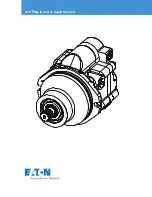
Assembly
5.4 Installing the machine
1LA5/6/7/9, 1LG4/6, 1MA6/7, 1MB..1/2/3/4/5 - SH 63 ... 355
Operating Instructions, 06/2018, A5E44455710A
63
Procedure
The machine axis must be vertical when it is lifted and the flange must be parallel to the
mating flange, so as to avoid seizing and stressing. Otherwise damage to the centering will
result.
1.
Grease the centering flange with assembly paste to make the process easier.
2.
Screw in two studs into tapped holes on opposite sides of the driven machine flange. The
studs act as positioning aids.
3.
Lower the machine slowly toward the driven machine and into the centering, so that the
flanges do not quite touch. Lowering too quickly risks damaging the centering.
4.
If necessary, rotate the machine into the right position so that the clearance holes in the
flange are central to the tapped holes.
5.
Lower the machine completely onto the mating flange so that it is fully in contact; then
remove the studs.
6.
Fix the machine using the flange fixing bolts.
5.4.3
Removing the rotor shipping brace
If a rotor shipping brace is attached to the machine, remove it at the last possible moment,
for example, when you are ready to push on the output or drive element.
Store the rotor locking device
Be sure to store the rotor locking device. It must be remounted for possible disassembly and
transport.
Details about the alignment accuracy can be found in the Section "Information about the
machine dimension drawing".
5.4.4
Recommended alignment accuracy
The alignment accuracy required depends essentially on the configuration of the overall
machine train. Observe the required alignment accuracy of the coupling manufacturer in all
cases when aligning the machine.
Table 5- 2
Recommended alignment accuracy
Speed
rpm
Parallel offset
mm
Angular offset
mm per 100 mm coupling diameter
750
0.09
0.09
1500
0.06
0.05
3000
0.03
0.025
















































